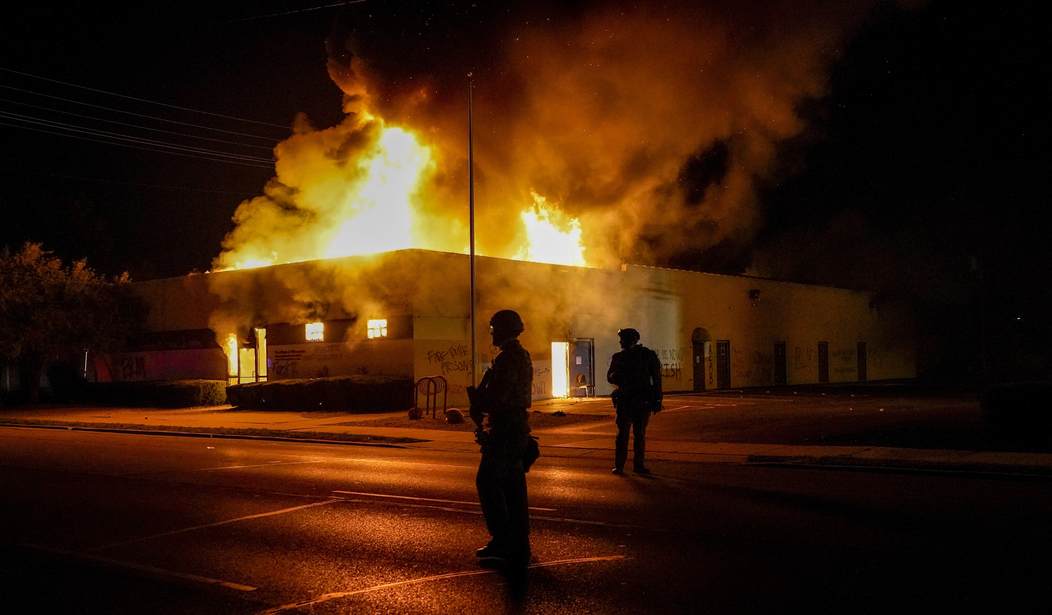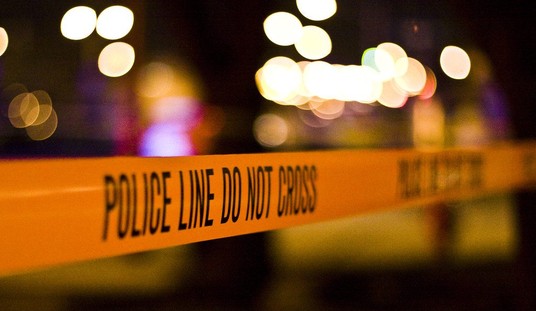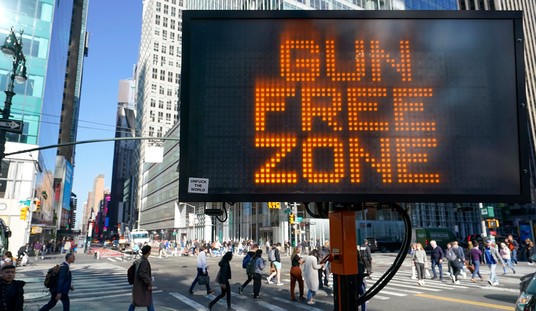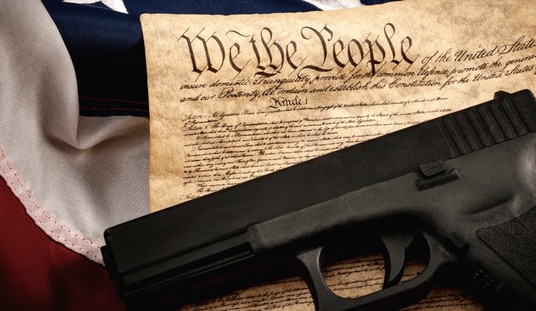There’ve been a lot of developments since my colleague Tom Knighton first wrote about the Tuesday night shooting in Kenosha, Wisconsin that left two people dead and a third injured, starting with the fact that 17-year old Kyle Rittenhouse has been arrested and charged with one count of 1st degree murder for one of the deaths, and additional charges could soon follow.
Rittenhouse was arrested at his home in Antioch, Illinois, which is about 20 miles southwest of Kenosha. It’s unclear why the teenager wasn’t taken into custody at the scene, given the fact that he was caught on video approaching officers shortly after the shooting took place.
Police Chief Daniel Miskinis said Wednesday that he did not know if Rittenhouse was responsible for all three shootings. Videos on social media appear to show Rittenhouse carrying a gun and opening fire. Video appears to show him being chased down by someone in the crowd. Rittenhouse gets up and walks away toward oncoming law enforcement vehicles. No officers stop him.
The police chief said he did not know if Rittenhouse was part of a self-styled “militia” that had showed up armed to the demonstrations. The chief said he did not know if the group was an organized militia or individual armed citizens. Kenosha officials said they didn’t know why officers failed to stop Rittenhouse, saying noise and chaos at the scene could be a reason for them not acting.
We’ll get back to the charges in a couple of paragraphs, but it’s also worth noting that this afternoon President Donald Trump tweeted out that he’ll be sending federal authorities to Kenosha to help quell the unrest.
We will NOT stand for looting, arson, violence, and lawlessness on American streets. My team just got off the phone with Governor Evers who agreed to accept federal assistance (Portland should do the same!)…
— Donald J. Trump (@realDonaldTrump) August 26, 2020
I sincerely hope that the increased presence of law enforcement, along with the additional members of the National Guard that Gov. Tony Evers is sending will help ensure some actual peace in Kenosha this evening.
This afternoon, I spoke with Townhall.com’s Julio Rosas, who’s been on the ground and reporting from Kenosha for the past couple of days. Rosas seemed genuinely concerned about what tonight will bring. Will there be a step back from the increasing violence now that lives have been lost, or will there be an escalation? Ultimately, it’s up to those who’ve taken to the streets to decide what they will do. “The devil made me do it” is a poor excuse, whether you think the devil is Black Lives Matter, police officers, Democrats, or Republicans.
As gun owners, we talk constantly about being responsible for our own actions, right? We don’t want to see gun manufacturers sued out of business because someone used a firearm in a criminal act, for instance. That would be like like suing Zippo for all the buildings burned down in Kenosha this week. Personal responsibility is as real as personal safety, and the two should go hand in hand.
So let’s talk about the case of Kyle Rittenhouse. As many on social media have pointed out, a 1st degree intentional homicide charge sounds like an awfully difficult thing to prove in this situation, at least given the facts that are publicly known. Here’s a compilation of video shot at the scene (Warning: contains graphic footage):
WATCH: A video sync of the Kyle Rittenhouse shooting in Kenosha, WI with multiple camera angles and object highlights. pic.twitter.com/61XMCdHcmK
— Ian Miles Cheong (@stillgray) August 26, 2020
Remember, the video only tells us what it records. It can’t show us what it doesn’t see. So, we don’t know why Rittenhouse was running away from the person that threw the flaming bag at him. We don’t know what led up to that moment before the cameras started rolling, and I’m wondering what it is that we’re not seeing, because what we do see is a guy being chased by someone who appears to be trying to set him on fire, who then turns and fires shots as the person gets closer.
After the initial shots were fired, it appears that Rittenhouse then called 911, but started to run from the scene when several people began chasing after him. He continued down the street, tripped and fell, and then fired more shots at a man who’d hit him over the head with a skateboard, and another individual who then approached him with a handgun out, but not directly pointed at him.
In the videos, Rittenhouse doesn’t appear to be the initial aggressor. Keep in mind though, these short video clips don’t tell the whole story, any more than the initial video of Jacob Blake being shot told the entire story. We now know that a woman called 911 after Blake showed up at her home and allegedly took her keys, violating a protective order. We know that dispatch informed officers that Blake had an active warrant out for his arrest. We’ve now know that Blake was tased without effect when they tried to take him into custody, and was leaning into his vehicle when he was shot. We know that a knife was found on the driver’s side floorboard. Maybe these additional facts won’t change anyone’s mind about why police fired on Blake in front of his children, but these aren’t trivial details. We also knew none of this the first time most of us saw the footage of Blake being shot.
The same holds true in the Rittenhouse case. The problem is that many of us don’t want to wait for facts. We see these horrible images on our smartphones or computers and it fires up an emotional response. It’s so easy to instantaneously react, especially when we’re flooded with a constant and steady stream of information pouring into our brain. Our critical thinking skills are overwhelmed in the deluge of data. “It’s clear what I’m looking at,” we think confidently, forgetting that we still don’t know what we don’t know. We form opinions before we have many facts, and for many of us, we compound that error by refusing to deviate from our starting position, even in the presence of compelling evidence pointing to a different conclusion.
I don’t know if Kyle Rittenhouse acted in self-defense, but based on what I know now I think it’s quite possible. I’m keeping an open mind. What I really want to know is why a 17-year old from Illinois was out on the streets of Kenosha, Wisconsin with a gun Wednesday evening to begin with, watching over a business he has no connection to. I suspect (but am again keeping an open mind) that Rittenhouse thought he was doing his patriotic duty by trying to keep the peace. I also suspect a part of him may have been hoping that there’d be trouble. Nothing he couldn’t handle, obviously. Just a little excitement.
Kyle Rittenhouse shouldn’t have been in Kenosha, Wisconsin. This particular fight wasn’t his, any more than it was the fight of BLM and Antifa agitators coming in from Chicago or Milwaukee. It wasn’t their neighborhoods that were being burned, and it wasn’t Rittenhouse’s family business that he was protecting. Rittenhouse had far more to lose than to gain by leaving his house with his AR and heading to Kenosha to stand guard, but he made the choice to do so.
Every person on the streets of Kenosha have their own choices to make. Will they light the match? Set the fuse? Open fire? Walk away? Stop screaming and start talking? Stop talking and start listening? Clench a fist or extend a hand? No matter how many laws we put on the books, no matter how many troops we put on the streets, ultimately what happens next in Kenosha and whether this is a turning point for calm or for chaos in in the hands of the people themselves. I’ll let you decide if that fact ends this story on a positive or a pessimistic note.









